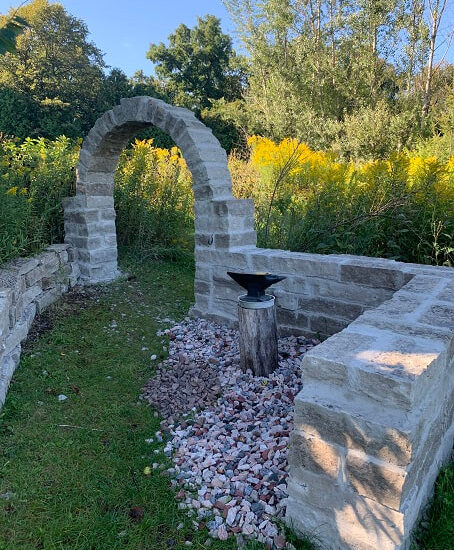Welcome to the Elm Grove Stone Arch Bridge, a monument of enduring history and architectural ingenuity. Nestled in the scenic setting of Elm Grove, West Virginia, this bridge is not just a means of passage, but a gateway to the past. Built in 1817, it stands as the oldest bridge in West Virginia still in use today, a testament to the craftsmanship of the early 19th century.
The construction of the Elm Grove Stone Arch Bridge was spearheaded by Moses Shepherd, a prominent local figure who leveraged his friendship with Henry Clay, the Speaker of the House, to influence the routing of the National Road. This strategic move ensured that the road passed by his estate, Shepherd Hall, now known as Monument Place. The bridge, carrying U.S. Route 40 over Little Wheeling Creek, was a vital link in the National Road—a major infrastructure project that connected Cumberland, Maryland, to the Ohio River, facilitating commerce and migration.
The bridge’s design is a marvel of engineering from its time. It features three spans of elegantly shaped elliptical arches, constructed from solid uncoarsed limestone blocks. This choice of design not only provided structural stability but also gave the bridge its distinctive ‘humpback’ appearance. Originally, the bridge was 208 feet long and the middle arch spanned 38 feet, flanked by two 25-foot arches.
Over the years, the Elm Grove Stone Arch Bridge has undergone several modifications to preserve its integrity and adapt to modern needs. In 1931, the original buttresses were removed to make way for sidewalks, and in 1953, the bridge was reinforced with gunite, a concrete mixture, to strengthen its structure. Despite these changes, the bridge retains much of its original design and continues to serve the community as a functional piece of history.
As you walk or drive over this bridge, imagine the countless travelers who have crossed it since the early 1800s. Picture the stagecoaches, the droves of animals, and the Conestoga wagons that once rumbled over its stone arches, carrying pioneers and goods westward. The bridge is not just a relic of the past but a living part of West Virginia’s heritage, a reminder of the days when the National Road was the lifeline of America’s westward expansion.




